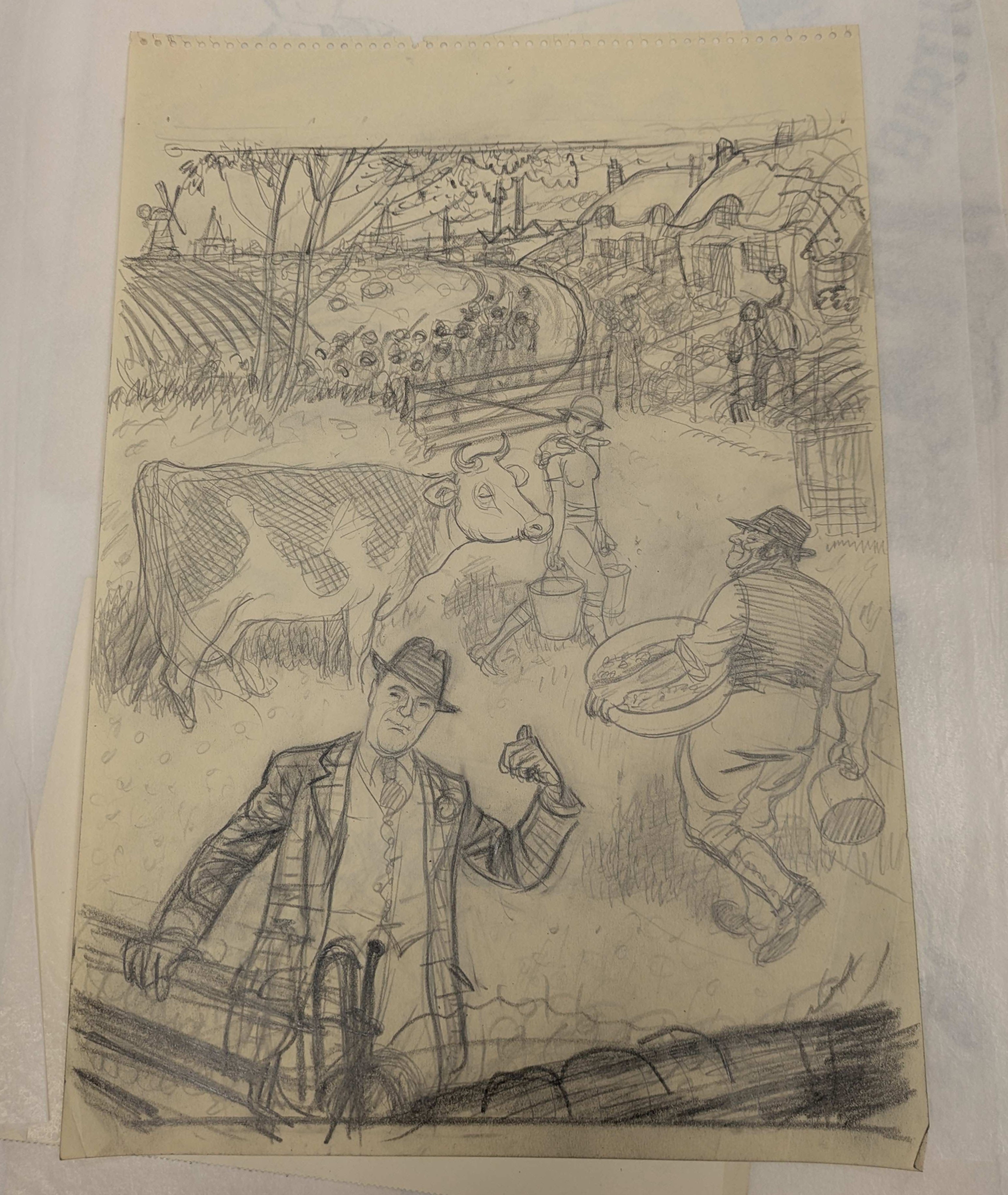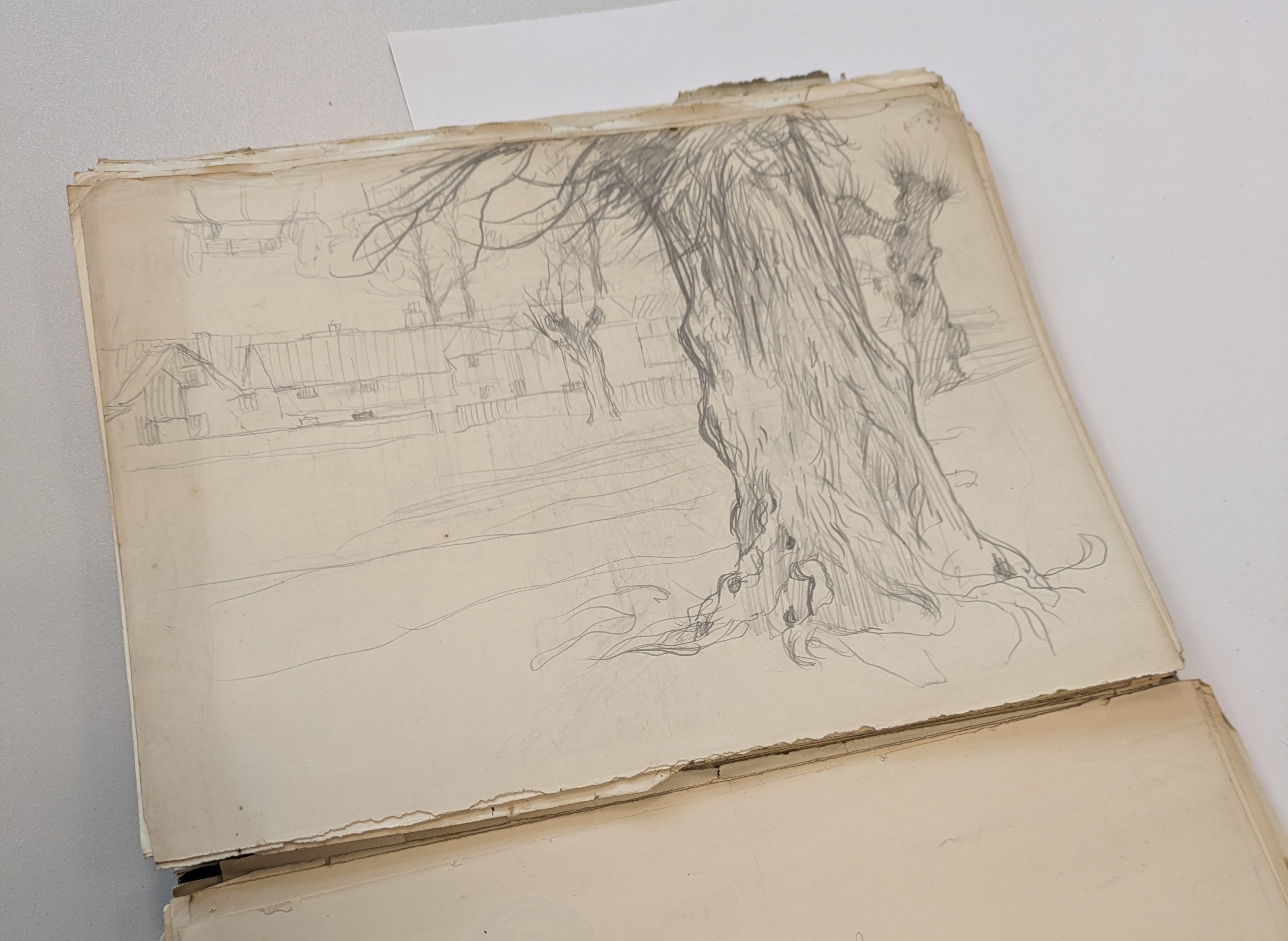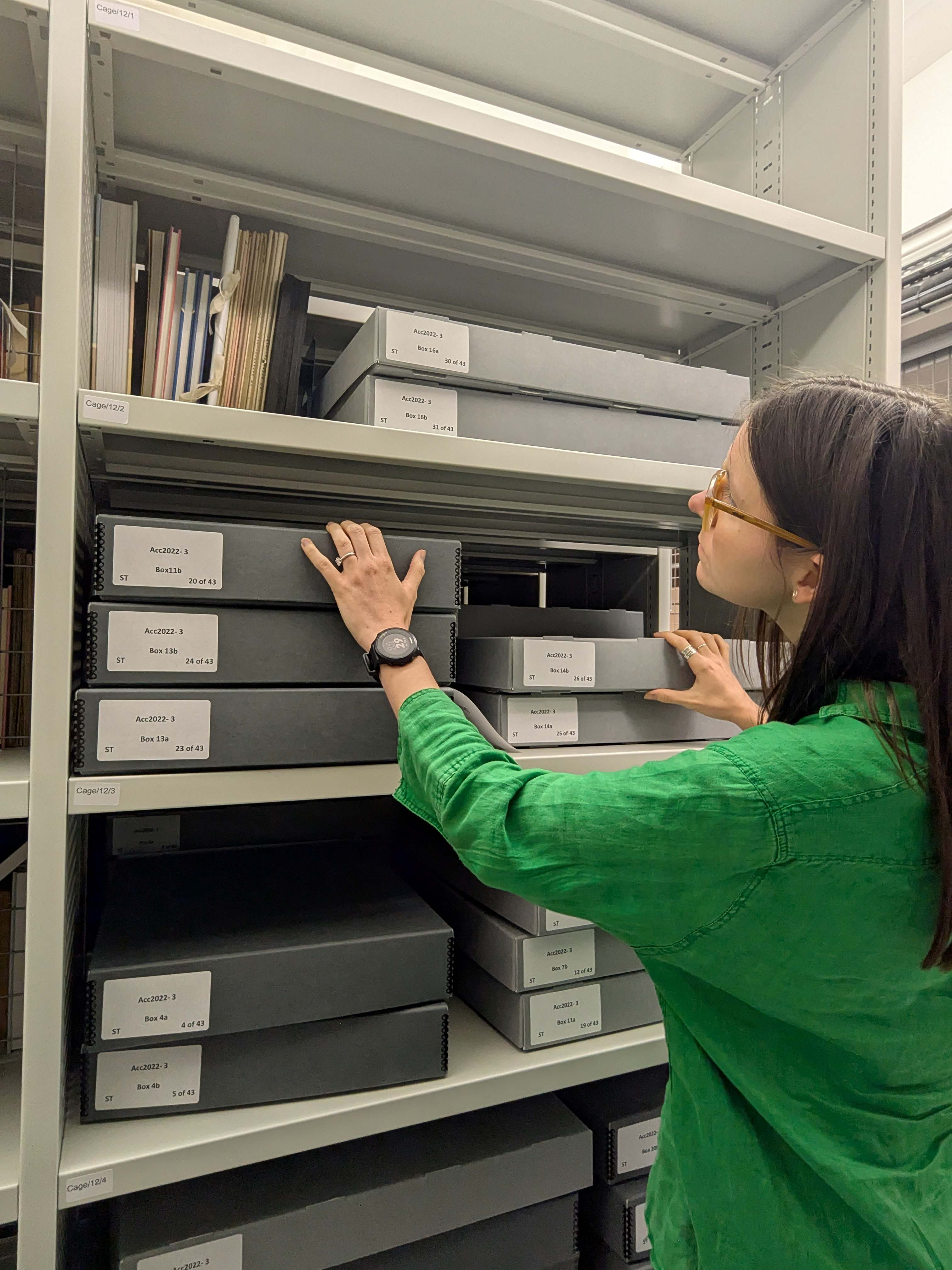In August, we welcomed Hollie Piff to the Archives and Special Collections as Project Archivist for the E.H. Shepard Collections. In this blog post, she will be reflecting on the first six weeks of her new role.
The last six weeks have been an exciting whirlwind of meeting new people, exploring the Stag Hill campus (aka getting lost), and getting to know the fantastic collections held here in Archives and Special Collections.
I graduated from my MA in Archives and Records Management in 2023 and then worked at the University of Exeter’s Special Collections where I catalogued the archives of playwrights, engineers, and local theatre companies. I have a background in literature and a passion for art and illustration, so I am enjoying spending time researching E.H. Shepard’s life and work. Everybody knows Winnie-the-Pooh, but Shepard’s work extends far beyond the world of the Hundred Acre Wood.
I will primarily be working on new deposits to The Shepard Trust Collection, which consist of 43 boxes of sketches, ink drawings, and paintings by E.H. Shepard for a variety of publications including Punch magazine, The Illustrated London News, and various illustrated books. I am also cataloguing a number of published books from the collection, which will help me to identify drawings in the archive.
The collection gives us an amazing insight into Shepard’s creative process; drawings often start as a light scribble in a sketchbook that blocks out shapes before Shepard adds more detail in the next sketch, sometimes supplementing drawings with studies of models in poses or period costumes. Eventually, ink is added, a caption is written, and the final drawing is complete. Unfortunately, this process is not quite so easy to track in an uncatalogued archive collection, and preparatory sketches are often dispersed across many boxes. It’s important to link these drawings on the catalogue, so it is my job to identify them—it’s like a complicated game of snap.
E.H. Shepard contributed many political cartoons to Punch magazine, particularly during the Second World War. Many of these cartoons depict familiar faces such as Winston Churchill or Franklin Roosevelt, which are easy to identify and describe. Other cartoons feature rather more niche political figures, so I often have to use visual clues to point me in the right direction.

This sketch is a good example, it shows a man standing in a field gesturing towards a woman who has just milked a cow. The description could quite easily have ended there, but I noticed that the man walking towards the cow looked an awful lot like John Bull (a political personification of England), and the focus on the man in the foreground reminded me of Shepard’s political cartoons for Punch. So, I searched for ‘cow’ on the Punch website and identified the finished drawing, ‘The Hudson Way’. The unidentified man is Robert Hudson, Minister of Agriculture and Fisheries from 1940-1945—mystery solved!
Not everything will be identified, because not everything was published, but it is incredibly satisfying when I see a familiar character or scene and can match it up with a published cartoon or illustration!
E.H. Shepard was endlessly imaginative and funny, and I have found some rather unexpected items in the first five boxes that I have listed, including drawings of baby penguins, a mole receiving a military medal, and a crab wicketkeeper. I have a personal affinity for Shepard’s drawings of trees, many of which were inspired by the local landscape of Surrey.

This is an exciting time to be working on Shepard’s work, as 2026 is the centenary year of Winnie-the-Pooh! I am looking forward to continuing my work on the project, and I am sure I’ll be back to the Archives and Special Collections Blog to update on my progress.
You can learn more about our E.H. Shepard archive collections on our website.

